A big crowd turned up last Wednesday in Charleville to attend the Irish Grassland Association dairy conference. Denis O’Donovan from Rosscarbery in west Cork spoke about how he operates a high-profit farm with low levels of input.
Denis and the O’Donovan family are now milking around 150 cows, having grown the farm from 76 cows in 2005.
Denis explained how he drifted into a higher stocking rate and higher input system around 10 years ago, more by accident than design.
“We were leasing land with quota to try and grow our numbers.
"In 2010 the milking platform was stocked at 4.4 cows/ha and we were growing wholecrop wheat and triticale on the outside land and feeding this out to the cows at the shoulders.
"Looking back now, it was a more complicated system, there was more machinery work involved which I didn’t like and you needed a higher level of stockmanship to look after the cows.
“At the time I was happy to be making money doing this and our Profit Monitor results compared favourably to other group members.
"However, when we hit low milk price years I took a bigger hit in profit than them.
"I was also working a lot harder and longer hours for little extra reward even in the high milk price years,” Denis said.
Since then, he has had the opportunity to buy land and lease land and his stocking rate is back to 3.4 cows/ha on the milking platform and 3 cows/ha overall and feeding 500kg of meal per year.
He says he will never stock the farm higher than a level where he will need to feed anything other than grass and ration in the shoulders of the year.
He says his current system requires less labour to run it and is less stressful on man and animal. The net profit in 2017 was €2,623/ha.
His Jersey crossbred cows produced 437kg of milk solids per cow in 2017.
The EBI of the herd is high at €155. Denis uses New Zealand Friesian bulls on his Jersey-looking cows, Jersey bulls on his Friesian-looking cows and Kiwi cross bulls on the crossbred cows that he’s happy with size-wise.
Asked what he does with his bull calves, he said the majority are sold locally, but a small number enter the food chain at two weeks of age.
Denis spoke about the importance of farming with the environment in mind.
He said Irish farmers have a good story to tell in terms of our environmental footprint, but that more of a premium needs to be got for our dairy products.
He said Carbery farmers are using 7l of water to produce 1l of milk while Californian farmers use 140l of water to produce 1l of milk.
He said Carbery farmers produce milk with a carbon footprint of 1.04kg of CO2 per litre of milk while farmers in the US use 1.5kg of CO2 to produce the same litre of milk.
He said he’ll be growing more clover, using less nitrogen and everyone will be growing more trees.
Carbery gave all its suppliers a bundle of trees to grow on their farms last year, something he says should be replicated everywhere.
Stan Lalor from Grassland Agro gave a presentation on fertiliser targets to maximise grass production. Stan presented seven steps for using fertiliser to grow more grass.
1. Phosphorus (P) and Potassium (K) for grazing
Stan said the amount of P and K required on grazing land depends on the amount of grass being utilised. For every tonne of grass dry matter grown, 4kg/ha of P and 30kg/ha of K are required as uptake. However, in a grazing scenario the animals recycle a lot of the nutrients back on the soil in the form of dung and urine (60% of P and 90% of K recycled). So if 15t/ha is grown and 80% of this is utilised, 19kg/ha of P and 36kg/ha of K needs to be applied for maintenance. Stan says that to build up soil fertility, an extra 10kg/ha of P and 30kg/ha of K is required per index.
2. P and K for silage
Stan explained that cutting land for silage removes two and a half times more P and 10 times more K than in a grazing scenario. For every 1tDM/ha harvested as silage, 3.5kg/h of P and 25kg/ha of K are removed and all of this must be replaced either by slurry or chemical fertiliser. So first-cut silage yielding 5tDM/ha will require 18k/ha of P and 125kg/ha of K, for soil fertility and maintenance.
3. Timing of P and K
Stan said that in a grazing scenario, 50 to 75% of P should be spread in spring, with the remainder drip-fed over the late spring and summer. If extra P is required for build-up, it should be spread in spring. He said spreading maintenance levels of K in spring, while not as essential as P, is not a problem, but K for build-up should be spread in the autumn to avoid animal health issues.
4. Slurry. Stan said slurry should, where possible be directed towards silage fields as the composition of slurry was ideally suited to the P and K requirements of silage. He said 1,000gl/acre of thick slurry was the equivalent to 1bag/acre of 5:5:30, while 1,000gl/acre of watery slurry was equivalent to 1bag/acre of 5:2.5:15. Therefore, 3,500gl/acre of thick slurry will satisfy the P and K requirements for a first-cut silage crop yielding 5tDM/ha.
5. Sulphur
Stan said sulphur goes hand in hand with nitrogen in the formation of protein within the grass plant. Stan recommended that sulphur should be spread in three or four applications across the year, with one of the first three fertiliser applications containing sulphur. Over the course of the year, nitrogen and sulphur should be spread in a 12:1 ratio. If 250kg/ha of nitrogen is spread, then 20kg/ha of sulphur should be spread.
6. Early nitrogen
Stan said that early nitrogen (N) spread in January and early February will grow less grass than N spread in late spring or summer. But he said that early grass is extremely valuable so it is worth spreading nitrogen early, when conditions are suitable. However, he said to maximise the response, N should be spread on fields with dry soils and a high ryegrass content and when soil temperatures are above 5.5°C without heavy rain forecast.
7. Simple plan
Table 1 shows the simple fertiliser plan Stan presented.
He said the plan won’t be right for everyone, but putting a simple plan in place is essential. He said the key thing is to not ignore the weaker fields that need extra P and K and put a plan in place to improve their soil fertility.
In brief
Denis O’Donovan said that his lower input and medium stocked farm is more profitable and easier to operate than when he was stocked higher and using more inputs.Denis said that before he expanded he was told to “put all his eggs in one basket and put both hands under it.”Stan Lalor presented a good paper on formulating a fertiliser plan. He said how much P and K is needed depends on offtakes.He said fertiliser plans should be simple to understand, but should also cater for weaker fields that need extra P and K. Read more
Watch: farmers at the Irish Grassland Association conference
Conference season for spring calvers
A big crowd turned up last Wednesday in Charleville to attend the Irish Grassland Association dairy conference. Denis O’Donovan from Rosscarbery in west Cork spoke about how he operates a high-profit farm with low levels of input.
Denis and the O’Donovan family are now milking around 150 cows, having grown the farm from 76 cows in 2005.
Denis explained how he drifted into a higher stocking rate and higher input system around 10 years ago, more by accident than design.
“We were leasing land with quota to try and grow our numbers.
"In 2010 the milking platform was stocked at 4.4 cows/ha and we were growing wholecrop wheat and triticale on the outside land and feeding this out to the cows at the shoulders.
"Looking back now, it was a more complicated system, there was more machinery work involved which I didn’t like and you needed a higher level of stockmanship to look after the cows.
“At the time I was happy to be making money doing this and our Profit Monitor results compared favourably to other group members.
"However, when we hit low milk price years I took a bigger hit in profit than them.
"I was also working a lot harder and longer hours for little extra reward even in the high milk price years,” Denis said.
Since then, he has had the opportunity to buy land and lease land and his stocking rate is back to 3.4 cows/ha on the milking platform and 3 cows/ha overall and feeding 500kg of meal per year.
He says he will never stock the farm higher than a level where he will need to feed anything other than grass and ration in the shoulders of the year.
He says his current system requires less labour to run it and is less stressful on man and animal. The net profit in 2017 was €2,623/ha.
His Jersey crossbred cows produced 437kg of milk solids per cow in 2017.
The EBI of the herd is high at €155. Denis uses New Zealand Friesian bulls on his Jersey-looking cows, Jersey bulls on his Friesian-looking cows and Kiwi cross bulls on the crossbred cows that he’s happy with size-wise.
Asked what he does with his bull calves, he said the majority are sold locally, but a small number enter the food chain at two weeks of age.
Denis spoke about the importance of farming with the environment in mind.
He said Irish farmers have a good story to tell in terms of our environmental footprint, but that more of a premium needs to be got for our dairy products.
He said Carbery farmers are using 7l of water to produce 1l of milk while Californian farmers use 140l of water to produce 1l of milk.
He said Carbery farmers produce milk with a carbon footprint of 1.04kg of CO2 per litre of milk while farmers in the US use 1.5kg of CO2 to produce the same litre of milk.
He said he’ll be growing more clover, using less nitrogen and everyone will be growing more trees.
Carbery gave all its suppliers a bundle of trees to grow on their farms last year, something he says should be replicated everywhere.
Stan Lalor from Grassland Agro gave a presentation on fertiliser targets to maximise grass production. Stan presented seven steps for using fertiliser to grow more grass.
1. Phosphorus (P) and Potassium (K) for grazing
Stan said the amount of P and K required on grazing land depends on the amount of grass being utilised. For every tonne of grass dry matter grown, 4kg/ha of P and 30kg/ha of K are required as uptake. However, in a grazing scenario the animals recycle a lot of the nutrients back on the soil in the form of dung and urine (60% of P and 90% of K recycled). So if 15t/ha is grown and 80% of this is utilised, 19kg/ha of P and 36kg/ha of K needs to be applied for maintenance. Stan says that to build up soil fertility, an extra 10kg/ha of P and 30kg/ha of K is required per index.
2. P and K for silage
Stan explained that cutting land for silage removes two and a half times more P and 10 times more K than in a grazing scenario. For every 1tDM/ha harvested as silage, 3.5kg/h of P and 25kg/ha of K are removed and all of this must be replaced either by slurry or chemical fertiliser. So first-cut silage yielding 5tDM/ha will require 18k/ha of P and 125kg/ha of K, for soil fertility and maintenance.
3. Timing of P and K
Stan said that in a grazing scenario, 50 to 75% of P should be spread in spring, with the remainder drip-fed over the late spring and summer. If extra P is required for build-up, it should be spread in spring. He said spreading maintenance levels of K in spring, while not as essential as P, is not a problem, but K for build-up should be spread in the autumn to avoid animal health issues.
4. Slurry. Stan said slurry should, where possible be directed towards silage fields as the composition of slurry was ideally suited to the P and K requirements of silage. He said 1,000gl/acre of thick slurry was the equivalent to 1bag/acre of 5:5:30, while 1,000gl/acre of watery slurry was equivalent to 1bag/acre of 5:2.5:15. Therefore, 3,500gl/acre of thick slurry will satisfy the P and K requirements for a first-cut silage crop yielding 5tDM/ha.
5. Sulphur
Stan said sulphur goes hand in hand with nitrogen in the formation of protein within the grass plant. Stan recommended that sulphur should be spread in three or four applications across the year, with one of the first three fertiliser applications containing sulphur. Over the course of the year, nitrogen and sulphur should be spread in a 12:1 ratio. If 250kg/ha of nitrogen is spread, then 20kg/ha of sulphur should be spread.
6. Early nitrogen
Stan said that early nitrogen (N) spread in January and early February will grow less grass than N spread in late spring or summer. But he said that early grass is extremely valuable so it is worth spreading nitrogen early, when conditions are suitable. However, he said to maximise the response, N should be spread on fields with dry soils and a high ryegrass content and when soil temperatures are above 5.5°C without heavy rain forecast.
7. Simple plan
Table 1 shows the simple fertiliser plan Stan presented.
He said the plan won’t be right for everyone, but putting a simple plan in place is essential. He said the key thing is to not ignore the weaker fields that need extra P and K and put a plan in place to improve their soil fertility.
In brief
Denis O’Donovan said that his lower input and medium stocked farm is more profitable and easier to operate than when he was stocked higher and using more inputs.Denis said that before he expanded he was told to “put all his eggs in one basket and put both hands under it.”Stan Lalor presented a good paper on formulating a fertiliser plan. He said how much P and K is needed depends on offtakes.He said fertiliser plans should be simple to understand, but should also cater for weaker fields that need extra P and K. Read more
Watch: farmers at the Irish Grassland Association conference
Conference season for spring calvers






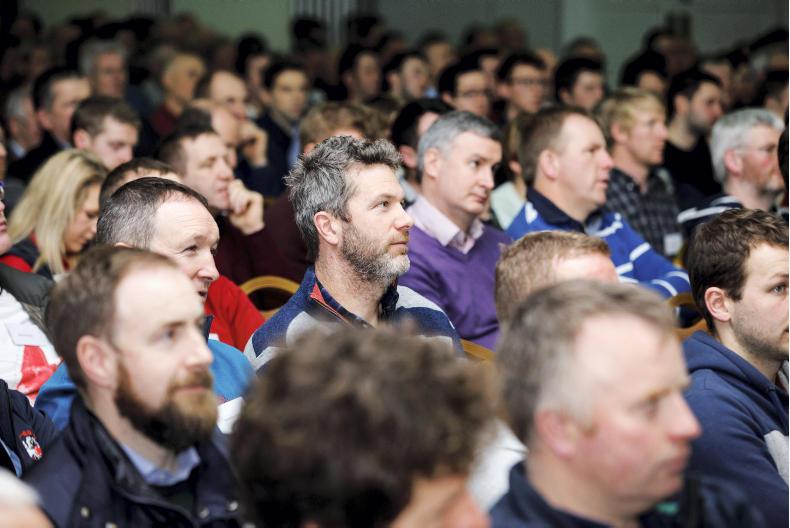
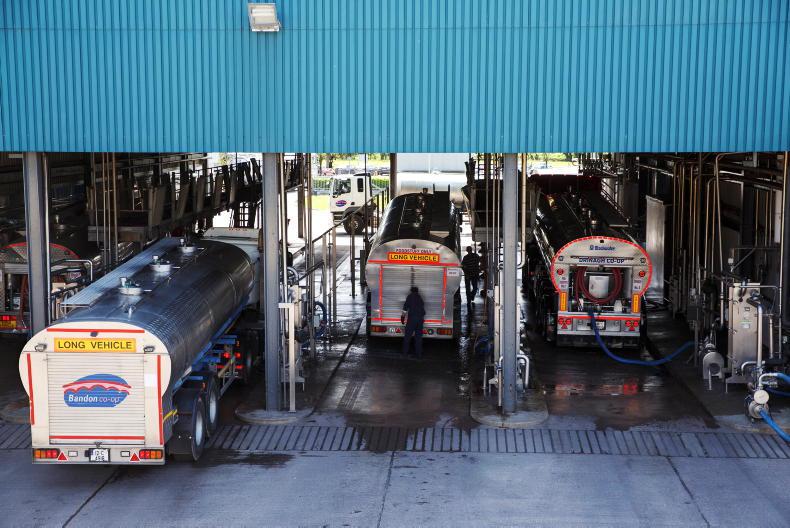
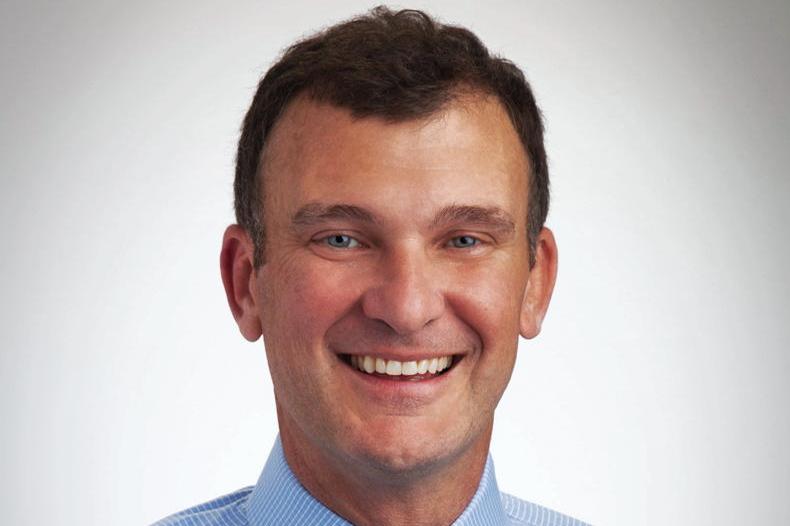
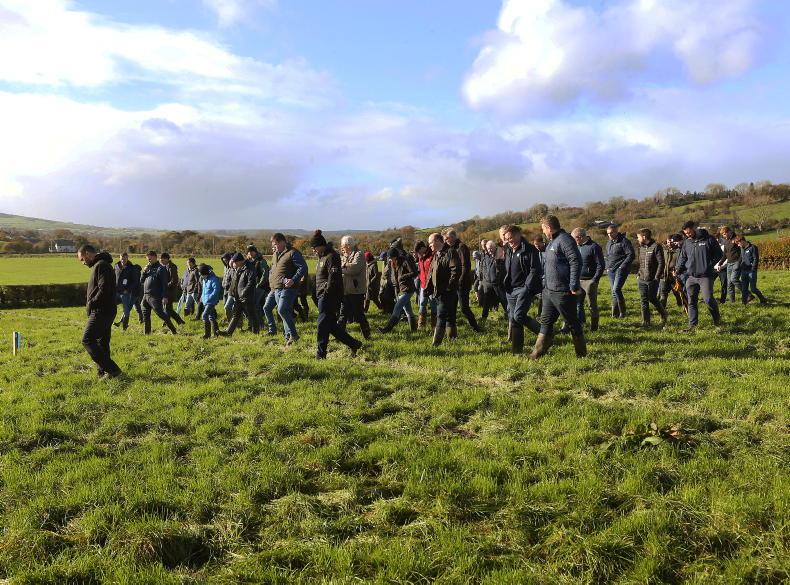
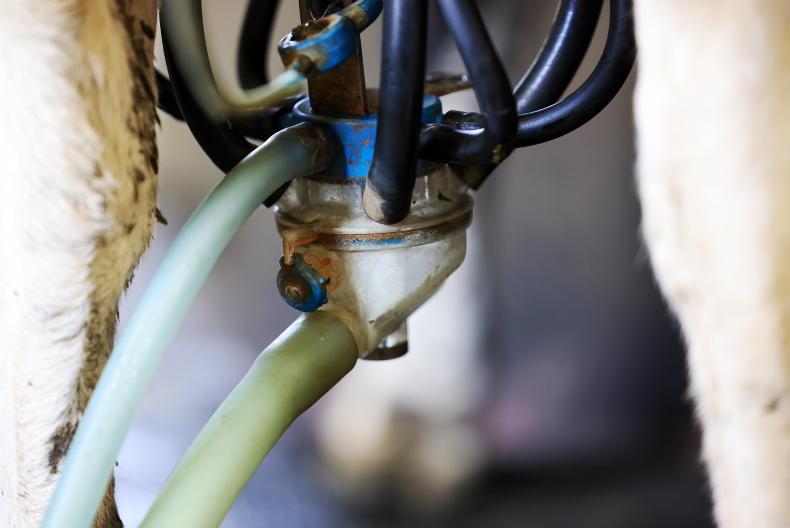
SHARING OPTIONS